Each quarter, we invite our sponsoring agencies to share news that is relevant to the learning and service of Virginia Master Naturalist volunteers.
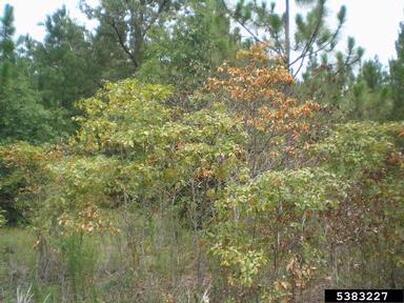 Leaf symptoms of laurel wilt disease (Raffaelea lauricola) in a group of small sassafrass trees. Photo by Chip Bates, Georgia Forestry Commission, Bugwood.org.
Leaf symptoms of laurel wilt disease (Raffaelea lauricola) in a group of small sassafrass trees. Photo by Chip Bates, Georgia Forestry Commission, Bugwood.org.
From the Virginia Department of Forestry and Virginia Cooperative Extension: Laurel Wilt Disease Alert
Summarized by Michelle Prysby, VMN Program Director, based on the DOF laurel wilt announcement by Forest Health Specialist Katlin DeWitt and the Diagnostic Sample Collection notice by Virginia Tech Plant Disease Clinic and Insect Identification Lab
Laurel wilt disease is a newly arrived threat to Virginia's forests. Its first documented presence in Virginia was confirmed in September from a sample collected from a sassafras tree in Scott County. This disease affects all plants in the Laurel (Lauraceae) family. In Virginia, those plants include sassafras and spicebush (both found statewide), swamp bay or redbay (found in southeastern Virginia) and pondspice (a rare and critically imperiled species found in Virginia at only a few sites.)
The disease is caused by an interaction between a fungus and a beetle that eats the fungus. The redbay ambrosia beetle tunnels into host trees carrying the fungus Raffaelea lauricola, the spores of which then germinate inside the tree. The fungus clogs the tree's water-conducting vessels, causing observable symptoms of wilting and dead leaves.
Although in Virginia, Laurel Wilt disease is currently only known in Scott County, it is expected to spread to other locations. It is already confirmed in North Carolina, Tennessee, and Kentucky. Virginia Department of Forestry and Virginia Cooperative Extension would like you to be on the lookout for laurel wilt disease. Please read the full VDOF announcement and a VDOF topic sheet on laurel wilt for more information. Suspect samples should be submitted through your local VCE office and collected as detailed in these instructions.
Summarized by Michelle Prysby, VMN Program Director, based on the DOF laurel wilt announcement by Forest Health Specialist Katlin DeWitt and the Diagnostic Sample Collection notice by Virginia Tech Plant Disease Clinic and Insect Identification Lab
Laurel wilt disease is a newly arrived threat to Virginia's forests. Its first documented presence in Virginia was confirmed in September from a sample collected from a sassafras tree in Scott County. This disease affects all plants in the Laurel (Lauraceae) family. In Virginia, those plants include sassafras and spicebush (both found statewide), swamp bay or redbay (found in southeastern Virginia) and pondspice (a rare and critically imperiled species found in Virginia at only a few sites.)
The disease is caused by an interaction between a fungus and a beetle that eats the fungus. The redbay ambrosia beetle tunnels into host trees carrying the fungus Raffaelea lauricola, the spores of which then germinate inside the tree. The fungus clogs the tree's water-conducting vessels, causing observable symptoms of wilting and dead leaves.
Although in Virginia, Laurel Wilt disease is currently only known in Scott County, it is expected to spread to other locations. It is already confirmed in North Carolina, Tennessee, and Kentucky. Virginia Department of Forestry and Virginia Cooperative Extension would like you to be on the lookout for laurel wilt disease. Please read the full VDOF announcement and a VDOF topic sheet on laurel wilt for more information. Suspect samples should be submitted through your local VCE office and collected as detailed in these instructions.
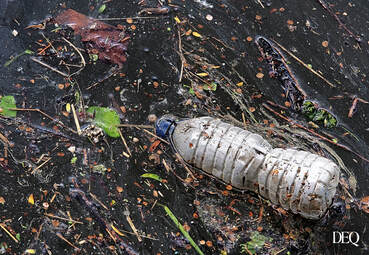 Photo by Virginia Department of Environmental Quality.
Photo by Virginia Department of Environmental Quality.
From the Virginia Department of Environmental Quality: Virginia Leading By Example to Reduce Plastic Pollution and Solid Waste
By Morgan Goodman, Pollution Prevention Specialist, DEQ
If you missed the presentation on Executive Order 77: Virginia Leading By Example to Reduce Plastic Pollution and Solid Waste at the VMN Conference, read on for more about this statewide effort.
Governor Northam signed Executive Order 77 (EO 77) on March 23, 2021. The goal of the executive order is for Virginia to lead by example in eliminating most single-use plastics at state agencies, colleges and universities through a near-term ban on several common disposable plastics and requiring the phase-out of other single use items by 2025. The executive order aims to address the increase in solid waste generation in the Commonwealth that has come at the same time as a reduction in recycling options in recent years. State agencies will now be reducing waste generation and diverting as much as possible from landfills for composting and recycling.
The first part of EO 77 states that agencies and institutions must cease using disposable plastic bags, single-use plastic and polystyrene food service containers, single-use disposable plastic straws and cutlery, and single-use plastic water bottles. The second part of EO 77 is a phase-out, requiring agencies to eliminate the buying, selling, or distribution of all non-medical single-use plastic and expanded polystyrene objects over a four-year period with objects that are reusable, compostable or recyclable.
The last element of EO 77 is broader waste reduction through agency plans that identify additional needs and opportunities for reducing all solid waste from agency operations. The purpose of these actions is to reduce plastic pollution and eliminate the need for new solid waste disposal facilities in Virginia. The executive order has already spurred many entities to rethink their purchasing and find innovative ways to reduce waste.
The Virginia Department of Environmental Quality (DEQ) has been helping state agencies and institutions implement EO 77 by providing a Plastic Pollution and Solid Waste Reduction Plan template and guidance on meeting the requirements. DEQ has over 30 years of pollution prevention experience from statewide programs like the Virginia Environmental Excellence Program, the Governor’s Environmental Excellence Awards, Virginia Green, and others. DEQ staff are bringing that knowledge to the table to make EO 77 successful across the Commonwealth.
To learn more about what EO 77 entails, visit DEQ’s EO 77 website. There you will find details about the executive order as well as resources like Frequently Asked Questions, recordings of past webinars, examples from agencies and universities, and best management practices.
Most importantly, the executive order is not happening in a vacuum; it is part of a broad array of legislation and efforts to address litter and waste in Virginia. Related efforts have passed the General Assembly recently such as the Polystyrene Food Container Ban, Balloon Release Ban, and legislation allowing localities to tax plastic bags. In addition to this legislation, the General Assembly has formed the Plastic Waste Prevention Advisory Council and Waste Diversion and Recycling Task Force to keep the momentum on these important issues moving forward. All of these efforts are helping Virginia tackle single-use plastics and think about the impact our choices make on Virginia’s environment.
Editor's note: For more information on how Virginia Tech is progressing with reducing single-use plastics and solid waste, see this news article.
By Morgan Goodman, Pollution Prevention Specialist, DEQ
If you missed the presentation on Executive Order 77: Virginia Leading By Example to Reduce Plastic Pollution and Solid Waste at the VMN Conference, read on for more about this statewide effort.
Governor Northam signed Executive Order 77 (EO 77) on March 23, 2021. The goal of the executive order is for Virginia to lead by example in eliminating most single-use plastics at state agencies, colleges and universities through a near-term ban on several common disposable plastics and requiring the phase-out of other single use items by 2025. The executive order aims to address the increase in solid waste generation in the Commonwealth that has come at the same time as a reduction in recycling options in recent years. State agencies will now be reducing waste generation and diverting as much as possible from landfills for composting and recycling.
The first part of EO 77 states that agencies and institutions must cease using disposable plastic bags, single-use plastic and polystyrene food service containers, single-use disposable plastic straws and cutlery, and single-use plastic water bottles. The second part of EO 77 is a phase-out, requiring agencies to eliminate the buying, selling, or distribution of all non-medical single-use plastic and expanded polystyrene objects over a four-year period with objects that are reusable, compostable or recyclable.
The last element of EO 77 is broader waste reduction through agency plans that identify additional needs and opportunities for reducing all solid waste from agency operations. The purpose of these actions is to reduce plastic pollution and eliminate the need for new solid waste disposal facilities in Virginia. The executive order has already spurred many entities to rethink their purchasing and find innovative ways to reduce waste.
The Virginia Department of Environmental Quality (DEQ) has been helping state agencies and institutions implement EO 77 by providing a Plastic Pollution and Solid Waste Reduction Plan template and guidance on meeting the requirements. DEQ has over 30 years of pollution prevention experience from statewide programs like the Virginia Environmental Excellence Program, the Governor’s Environmental Excellence Awards, Virginia Green, and others. DEQ staff are bringing that knowledge to the table to make EO 77 successful across the Commonwealth.
To learn more about what EO 77 entails, visit DEQ’s EO 77 website. There you will find details about the executive order as well as resources like Frequently Asked Questions, recordings of past webinars, examples from agencies and universities, and best management practices.
Most importantly, the executive order is not happening in a vacuum; it is part of a broad array of legislation and efforts to address litter and waste in Virginia. Related efforts have passed the General Assembly recently such as the Polystyrene Food Container Ban, Balloon Release Ban, and legislation allowing localities to tax plastic bags. In addition to this legislation, the General Assembly has formed the Plastic Waste Prevention Advisory Council and Waste Diversion and Recycling Task Force to keep the momentum on these important issues moving forward. All of these efforts are helping Virginia tackle single-use plastics and think about the impact our choices make on Virginia’s environment.
Editor's note: For more information on how Virginia Tech is progressing with reducing single-use plastics and solid waste, see this news article.
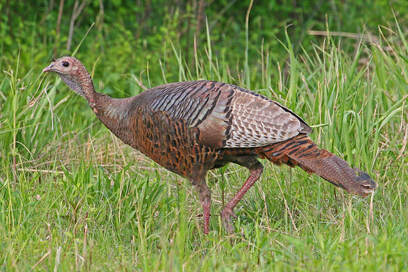 Female wild turkey. Photo by Judy Gallagher, VMN-Merrimac Farm Chapter. CC BY 2.0.
Female wild turkey. Photo by Judy Gallagher, VMN-Merrimac Farm Chapter. CC BY 2.0.
From the Virginia Department of Wildlife Resources: Wild Turkey Summer Brood Survey Results
By Katie Martin, Deer-Bear-Turkey Biologist and Mike Dye, Forest Game Bird Project Leader, Virginia Department of Wildlife Resources
Wild turkey success in hatching and raising broods plays an important role in wild turkey populations and fall harvests. To monitor reproduction, the Virginia Department of Wildlife Resources (DWR) annually asks staff and volunteers to report all turkeys they see during July and August. Further, the ratio of young birds (poults) to the number of females (hens) is a critical index to reproduction (P/H). The Department would like to thank the many volunteers of the Virginia National Wild Turkey Federation chapters and the Virginia Master Naturalists for their survey participation in 2021!
The 2021 DWR turkey brood survey suggests that reproduction for wild turkey rebounded from the low of 2020 (1.9 poults/hen) to 2.7 poults/hen, just above our long term average (2.5 P/H). Unfortunately, the overall number of turkeys staff have observed in the summer has declined steadily since 2015 (the 2020 survey had a low sample size and was not statistically higher). In 2021 total turkeys observed fell below the long-term average (19/1k miles) to 14 birds per 1,000 miles.
In 2021, the Department received 244 reports by observers driving nearly 293,000 miles during July and August. Seventy-three percent of observers reported seeing at least one turkey. On a statewide basis, the number of turkeys seen per 1,000 miles driven in 2021 was 14.3 turkeys per 1,000 miles. This ratio peaked recently in 2014 and 2015 and has been declining since. Low reproduction is believed to be the primary cause of the decline. The Tidewater Region had the highest ratio (24/1,000 mi.) and likely has the highest turkey population of any region in the state. Following close behind was the Southwest region with 21 birds per 1,000 miles. The North Piedmont (11), South Piedmont (10) and North Mountains (9) were all fairly stable and below the long-term average of 19 birds per 1,000 miles.
For the complete report, including additional details on poult-to-hen ratios as well as graphs of the data, see this PDF report.
By Katie Martin, Deer-Bear-Turkey Biologist and Mike Dye, Forest Game Bird Project Leader, Virginia Department of Wildlife Resources
Wild turkey success in hatching and raising broods plays an important role in wild turkey populations and fall harvests. To monitor reproduction, the Virginia Department of Wildlife Resources (DWR) annually asks staff and volunteers to report all turkeys they see during July and August. Further, the ratio of young birds (poults) to the number of females (hens) is a critical index to reproduction (P/H). The Department would like to thank the many volunteers of the Virginia National Wild Turkey Federation chapters and the Virginia Master Naturalists for their survey participation in 2021!
The 2021 DWR turkey brood survey suggests that reproduction for wild turkey rebounded from the low of 2020 (1.9 poults/hen) to 2.7 poults/hen, just above our long term average (2.5 P/H). Unfortunately, the overall number of turkeys staff have observed in the summer has declined steadily since 2015 (the 2020 survey had a low sample size and was not statistically higher). In 2021 total turkeys observed fell below the long-term average (19/1k miles) to 14 birds per 1,000 miles.
In 2021, the Department received 244 reports by observers driving nearly 293,000 miles during July and August. Seventy-three percent of observers reported seeing at least one turkey. On a statewide basis, the number of turkeys seen per 1,000 miles driven in 2021 was 14.3 turkeys per 1,000 miles. This ratio peaked recently in 2014 and 2015 and has been declining since. Low reproduction is believed to be the primary cause of the decline. The Tidewater Region had the highest ratio (24/1,000 mi.) and likely has the highest turkey population of any region in the state. Following close behind was the Southwest region with 21 birds per 1,000 miles. The North Piedmont (11), South Piedmont (10) and North Mountains (9) were all fairly stable and below the long-term average of 19 birds per 1,000 miles.
For the complete report, including additional details on poult-to-hen ratios as well as graphs of the data, see this PDF report.
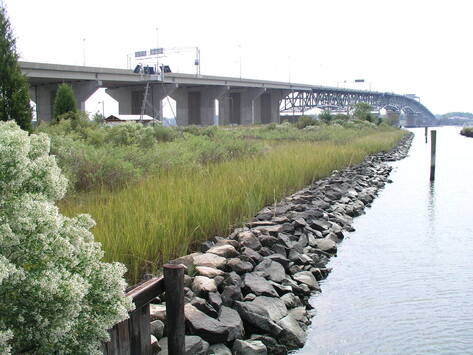 Marsh sill at the VIMS campus. Marsh sills combine tidal marshes with low-elevation stone structures. Photo courtesy of Karen Duhring.
Marsh sill at the VIMS campus. Marsh sills combine tidal marshes with low-elevation stone structures. Photo courtesy of Karen Duhring.
From the Virginia Institute of Marine Science Center for Coastal Resources Management - Nature-Based Solutions
From the VIMS CCRM monthly newsletter
The Center for Coastal Resources Management has a new online site where you can learn all about natural and nature-based features that provide benefits in coastal communities.
From the website: "Coastal forests, wetlands, beaches, and living shorelines provide multiple benefits for coastal communities, including storm protection, soaking up floodwaters, improving water quality, providing recreation areas and maintaining important habitats. Protected and restored natural features can also reduce the cost of flood insurance."
Natural features include trees, forested wetlands, marshes, and dunes, for example. Nature-based features are human-made and include marsh sills, oyster sills, and offshore breakwaters.
The new site has fact sheets on each of kind of feature and the benefits it provides. The site also includes reports for each coastal city and county summarizing the natural and nature-based features there and their benefits.
Check out the site and learn more about natural and nature-based features for improving coastal resilience!
From the VIMS CCRM monthly newsletter
The Center for Coastal Resources Management has a new online site where you can learn all about natural and nature-based features that provide benefits in coastal communities.
From the website: "Coastal forests, wetlands, beaches, and living shorelines provide multiple benefits for coastal communities, including storm protection, soaking up floodwaters, improving water quality, providing recreation areas and maintaining important habitats. Protected and restored natural features can also reduce the cost of flood insurance."
Natural features include trees, forested wetlands, marshes, and dunes, for example. Nature-based features are human-made and include marsh sills, oyster sills, and offshore breakwaters.
The new site has fact sheets on each of kind of feature and the benefits it provides. The site also includes reports for each coastal city and county summarizing the natural and nature-based features there and their benefits.
Check out the site and learn more about natural and nature-based features for improving coastal resilience!
 This solar site at Cople Elementary School in Westmoreland County, Virginia is the first 'Gold Certified Pollinator-Smart habitat" in the state, using native plants to vegetate the area under and around the panels. Photo by Michelle Prysby.
This solar site at Cople Elementary School in Westmoreland County, Virginia is the first 'Gold Certified Pollinator-Smart habitat" in the state, using native plants to vegetate the area under and around the panels. Photo by Michelle Prysby.
From the Virginia Department of Conservation and Recreation: Virginia Pollinator Smart Team holds the first Virginia Native Seed Industry Meeting
By René Hypes, Environmental Review Coordinator, Virginia Department of Conservation and Recreation Natural Heritage Program
DCR staff participated in an engaging first meeting on October 13 to discuss the development of a native seed industry in Virginia. With Virginia’s coming age of renewable energy, there is potential for over 200,000 acres to be identified for solar development in the Commonwealth over the next decade. The benefits of planting native species instead of turf grass for these facilities and other development are numerous including reduced soil and water runoff, the capture of atmospheric carbon, and the establishment of pollinator habitat with increased pollinator services to adjacent agricultural lands and lower maintenance cost.
In the eastern United States, two large-scale native seed companies in Kentucky and Pennsylvania provide native species to the Commonwealth. Within Virginia, there is no native seed industry with the exception of some native plant nurseries. According to the DCR Native Plant Finder, there are 278 native species commercially available with only seven Virginia ecotypes. The development of a sustainable native seed industry here in Virginia is vital to the success of the Virginia Pollinator Smart Program. Now, DCR and partner organizations are establishing the first Virginia Native Seed Growers’ Business Advisory Committee, which will focus on developing markets, growers, and ecotypes. More information to come as this new initiative moves forward!
Read more about the Pollinator-Smart program on the VDCR website.
By René Hypes, Environmental Review Coordinator, Virginia Department of Conservation and Recreation Natural Heritage Program
DCR staff participated in an engaging first meeting on October 13 to discuss the development of a native seed industry in Virginia. With Virginia’s coming age of renewable energy, there is potential for over 200,000 acres to be identified for solar development in the Commonwealth over the next decade. The benefits of planting native species instead of turf grass for these facilities and other development are numerous including reduced soil and water runoff, the capture of atmospheric carbon, and the establishment of pollinator habitat with increased pollinator services to adjacent agricultural lands and lower maintenance cost.
In the eastern United States, two large-scale native seed companies in Kentucky and Pennsylvania provide native species to the Commonwealth. Within Virginia, there is no native seed industry with the exception of some native plant nurseries. According to the DCR Native Plant Finder, there are 278 native species commercially available with only seven Virginia ecotypes. The development of a sustainable native seed industry here in Virginia is vital to the success of the Virginia Pollinator Smart Program. Now, DCR and partner organizations are establishing the first Virginia Native Seed Growers’ Business Advisory Committee, which will focus on developing markets, growers, and ecotypes. More information to come as this new initiative moves forward!
Read more about the Pollinator-Smart program on the VDCR website.

From the Virginia Museum of Natural History - #BenInNature
If you are a Facebook user and looking for some terrific natural history stories about native species in Virginia, you will enjoy the #BenInNature posts from the Administrator of Science at the Virginia Museum of Natural History, Ben Williams. He frequently writes about invertebrates, fungi, and other lesser known species. Recent posts have featured such species as the showy emerald moth, field crickets, puffball mushrooms, and the red-footed cannibalfly. Visit Virginia Museum of Natural History on Facebook.
If you are a Facebook user and looking for some terrific natural history stories about native species in Virginia, you will enjoy the #BenInNature posts from the Administrator of Science at the Virginia Museum of Natural History, Ben Williams. He frequently writes about invertebrates, fungi, and other lesser known species. Recent posts have featured such species as the showy emerald moth, field crickets, puffball mushrooms, and the red-footed cannibalfly. Visit Virginia Museum of Natural History on Facebook.

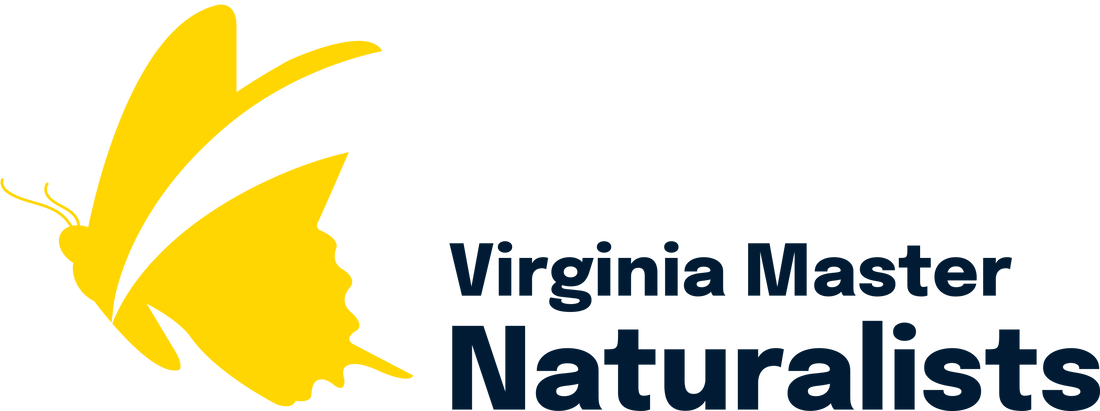
 RSS Feed
RSS Feed